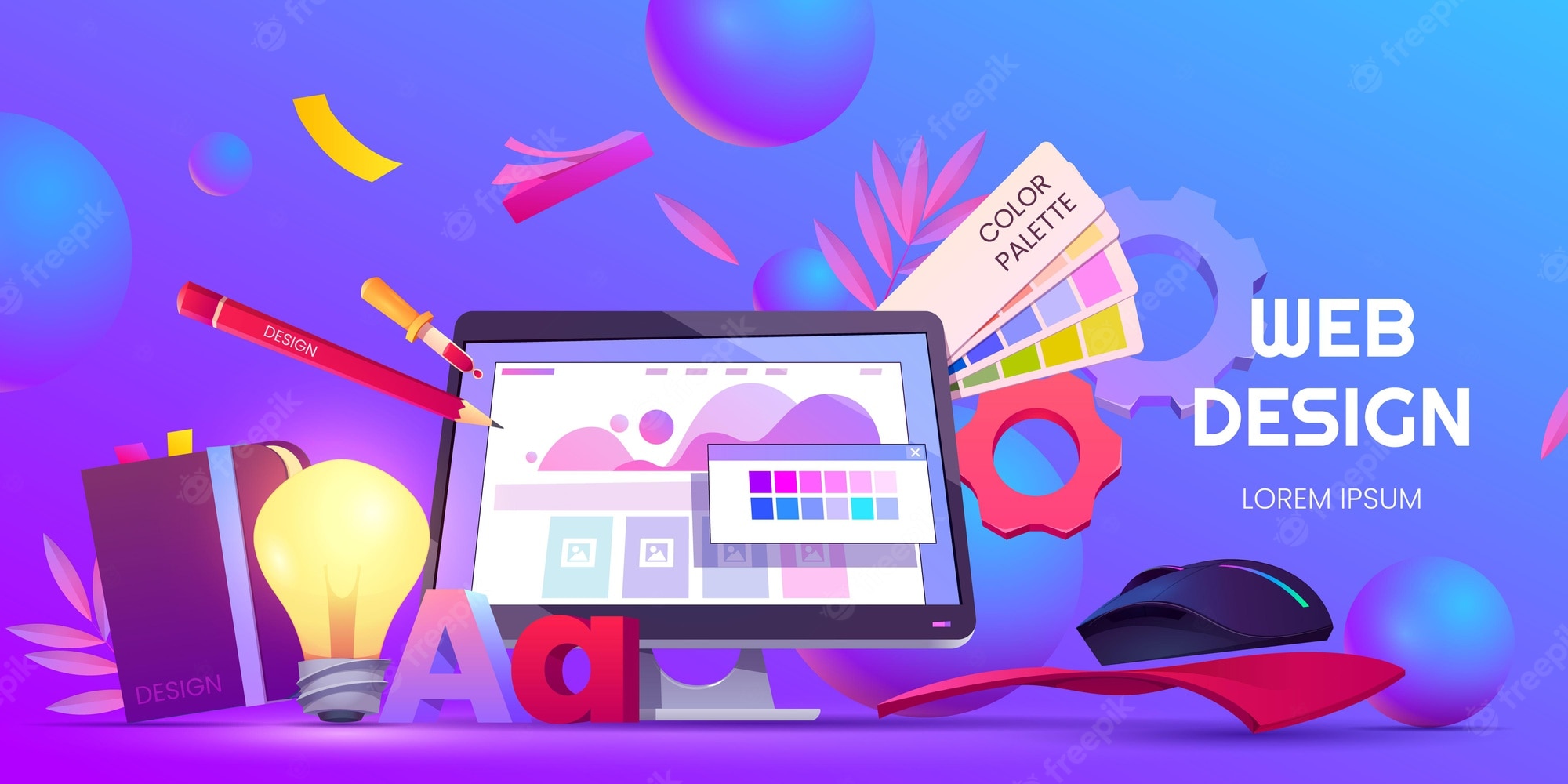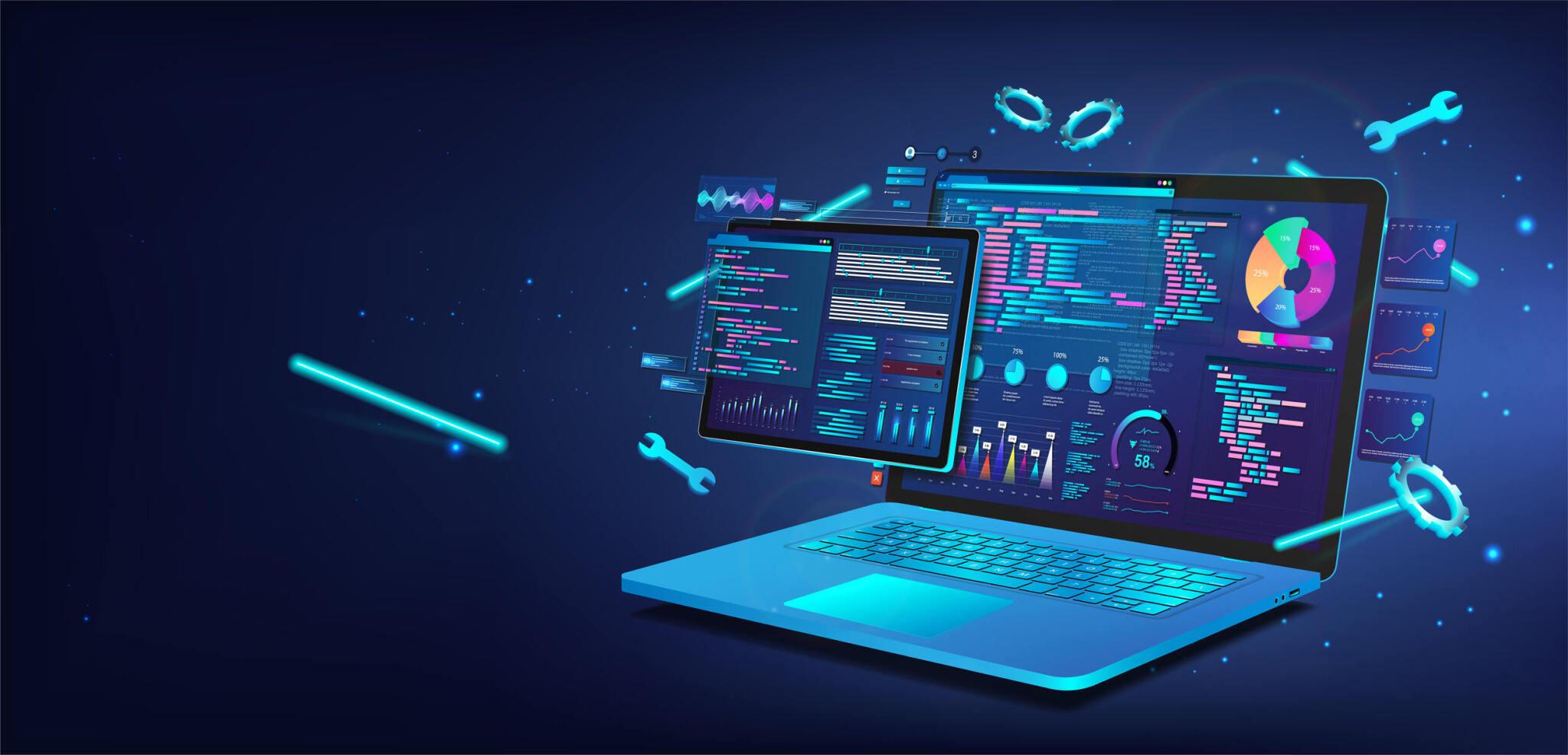Exploring Creative Trends in Web Design for Modern Businesses
The landscape of web design is constantly progressing, showing the vibrant needs of contemporary services. Current patterns highlight a preference for minimalism, bold typography, and appealing interactivity. Firms progressively prioritize user experience with mobile-first principles and personalized web content. Additionally, a focus on sustainability is obtaining traction. Recognizing these patterns is important for businesses intending to attract attention in a congested marketplace. What effects do these shifts hold for the future of electronic engagement?
Welcoming Bold Typography
Vibrant typography has arised as a defining component in contemporary web design, catching focus and conveying messages with striking quality. This fad focuses on visually impactful message that improves user engagement and brand name identity. Designers frequently utilize distinct typefaces and extra-large font styles to produce a pecking order, directing audiences through web content perfectly.
The tactical use of vibrant typography enables efficient storytelling, enabling brands to connect their worths succinctly. It serves not just aesthetic objectives but also useful ones, as it boosts readability throughout devices and screen dimensions.
As web sites compete for user interest, vibrant typography sticks out in a saturated digital landscape. Its convenience makes it possible for developers to try out contrasting colors and formats, additionally intensifying its effectiveness. Ultimately, embracing bold typography represents a shift in the direction of even more communicative and expressive web design, fostering a deeper link in between brand names and their target markets.
The Increase of Minimalist Style
As digital environments become increasingly cluttered, the surge of minimal style supplies a renewing alternative that prioritizes simplicity and capability. This layout ideology remove unneeded aspects, enabling content to take spotlight. By concentrating on clean lines, adequate white space, and a limited shade scheme, minimalist design improves user experience and enhances navigating.
Services adopting this trend objective to communicate their brand name message plainly and efficiently, fostering a sense of calmness and clearness. The absence of disturbances aids customers concentrate on vital details, causing improved engagement and conversion rates. Furthermore, minimalist style lines up well with mobile-first strategies, guaranteeing that websites stay obtainable and easy to use throughout different gadgets.
Inevitably, the rise of minimal design mirrors a wider change towards focusing on user requirements and choices, making it an effective device for contemporary companies aiming to make a long-term impact in the electronic landscape.
Immersive Animations and Interactivity
While several web designers accept minimal aesthetics, an additional engaging trend gaining traction is making use of immersive computer animations and interactivity. This approach improves user interaction by developing intriguing experiences that draw site visitors into the web content. Designers employ dynamic components such as computer animated backgrounds, scrolling results, and interactive infographics to communicate intricate ideas in an obtainable way.
These animations not just supply visual passion but likewise overview customers through the navigation procedure, making interactions more user-friendly. Float impacts and computer animated shifts can encourage users to discover even more, leading to boosted time invested on the website.
This trend straightens with the wider movement in the direction of storytelling in internet design, where computer animations offer as narrative tools that convey brand name messages successfully. By integrating immersive animations and interactivity, services can differentiate themselves in a jampacked online landscape, ultimately boosting user contentment and brand name commitment.
Mobile-First Layout Concepts
Mobile-first style principles stress prioritizing user experience by making sure websites operate perfectly on smaller screens. This technique integrates responsive layout strategies that adjust to various device dimensions while keeping visual integrity. In addition, it concentrates on touchscreen navigating style, enhancing usability for mobile customers.
Focusing On User Experience
How can developers successfully prioritize user experience in a progressively mobile-centric world? Stressing mobile-first style concepts is essential, as users mainly involve with internet sites with mobile gadgets. This strategy urges designers to streamline material, guaranteeing it is conveniently accessible and accessible on smaller screens. Trick practices consist of streamlining navigating, lessening load times, and using touch-friendly elements that boost interactivity. Additionally, prioritizing clear typography and intuitive layouts can substantially enhance user contentment. Developers must constantly gather user comments to fine-tune their strategies, adjusting to evolving user requirements and preferences. By concentrating on these elements, companies can create an engaging electronic experience that promotes loyalty and drives conversions, inevitably straightening with the expectations of today's mobile customers.
Receptive Layout Methods
Designers embrace receptive design techniques to develop adaptive and versatile internet experiences that satisfy various screen dimensions. This approach prioritizes mobile-first style concepts, ensuring peak functionality on smaller sized devices before scaling up for bigger displays. By making use of liquid grids, adaptable images, and media inquiries, developers can keep a natural aesthetic identification throughout all platforms. This technique not just improves user interaction yet additionally improves internet search engine rankings, as mobile-friendly sites are preferred by search algorithms. In addition, receptive layouts enable services to get to a wider audience, suiting individuals on desktops, smart devices, and tablets alike. In general, applying these strategies is vital for modern-day web design, making sure that organizations remain competitive in an ever-evolving digital landscape.
Touchscreen Navigating Layout
With the rise of smart phones, touchscreen navigating has actually become a fundamental element of web design. Designers are significantly adopting mobile-first principles to improve user experience and involvement. Web Design services. Effective touchscreen navigation prioritizes larger buttons and user-friendly gestures, permitting individuals to communicate conveniently with web content. This strategy lowers frustration and encourages expedition, as customers can browse effortlessly with their fingers. Additionally, incorporating swipe motions and tap performance deals with the natural actions of mobile individuals. Comments systems, such as visual hints and animations, enhance usability better by verifying actions. As touchscreens control user communications, using these style elements not just lines up with modern-day expectations however additionally cultivates a more satisfying and accessible browsing experience for all customers
Personalized User Experiences
What makes a customer really feel really engaged on an internet site? The answer often depends on personalized user experiences. By customizing material and navigation to specific preferences, companies can create a purposeful connection with their target market. This customization can be achieved through numerous methods, such as evaluating user habits, using cookies, and supplying customized recommendations based on previous interactions.
For example, ecommerce systems that suggest products based on searching history not only improve user experience yet additionally raise conversion prices. Incorporating dynamic content that adjusts to the user's location or time of day can additionally enhance interaction.
Furthermore, tailored introductions or messages can make individuals really feel valued and recognized. As contemporary services strive to stand apart in a competitive digital landscape, accepting personalized user experiences becomes crucial, cultivating commitment and motivating repeat gos to. Inevitably, this approach changes a basic internet site right into an interactive platform that reverberates with its audience.
Sustainability in Web Design
As the digital landscape continues to progress, the value of sustainability in web design has actually obtained considerable interest. Designers are progressively knowledgeable about the ecological influence their developments can have, prompting a change towards environment-friendly techniques (Web Design Agency). Sustainable web design concentrates on maximizing internet sites to lower power intake and carbon impacts. Methods include using minimalistic design concepts, maximizing photos, and utilizing efficient coding techniques to enhance loading speeds
The choice of organizing service providers plays a crucial role; numerous developers are currently deciding for green holding solutions powered by eco-friendly energy. By prioritizing availability and straightforward navigation, sustainable styles additionally accommodate a broader audience, enhancing usability. This mindful technique not just allures to environmentally-minded customers yet additionally adds to the total long life and performance of websites. Ultimately, sustainability in web design reflects an expanding trend towards responsible electronic methods that straighten with modern-day organization worths.

Regularly Asked Concerns
Exactly How Can I Pick the Right Color Pattern for My Website?
To choose the ideal color design for a web site, one must consider the brand's identity, target audience, and emotional influence. Using shade theory and screening mixes can improve user experience and visual charm significantly.
What Are the most effective Devices for Prototyping Website Design?
The best tools for prototyping website design consist of Figma, Lay out, Adobe XD, and InVision. These systems provide user-friendly interfaces, collaboration functions, and comprehensive libraries, making them excellent for designers to develop and fine-tune their principles efficiently.
Just how Do I Determine the Effectiveness of My Web Design?
To determine web design effectiveness, one ought to assess user interaction metrics, conversion prices, and usability responses (agency for web design). A/B testing Web Design Agency and heatmaps can likewise give insights right into user habits, assisting essential modifications for better performance and user experience
What Are Typical Web Design Blunders to Avoid?
Common web design blunders include messy formats, poor navigating, slow packing times, absence of mobile optimization, inadequate contrast, and neglecting user responses. Staying clear of these mistakes boosts user experience and increases total effectiveness of the internet site.
Just how Usually Should I Update My Website Style?
A site design need to be updated every 2 to 3 years, or quicker if considerable modifications in branding or technology take place. Routine updates maintain the website fresh, functional, and aligned with present user expectations.
